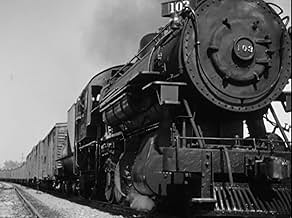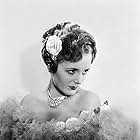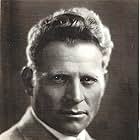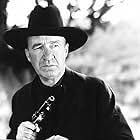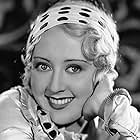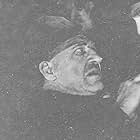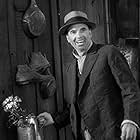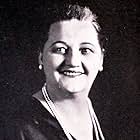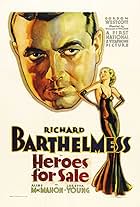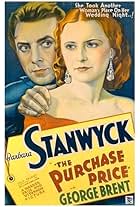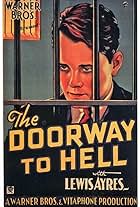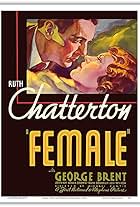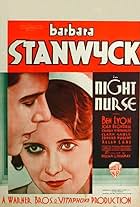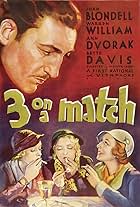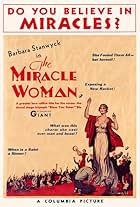Aggiungi una trama nella tua linguaEvents take an unhappy turn for two Bill and Jack, two locomotive engineers, after Bill is attracted to his best friend's wife.Events take an unhappy turn for two Bill and Jack, two locomotive engineers, after Bill is attracted to his best friend's wife.Events take an unhappy turn for two Bill and Jack, two locomotive engineers, after Bill is attracted to his best friend's wife.
- Railroad Worker at Lunch Counter
- (non citato nei titoli originali)
- Yardmaster
- (non citato nei titoli originali)
- Railroad Worker at Lunch Counter
- (non citato nei titoli originali)
- Railroad Worker
- (non citato nei titoli originali)
- Railroad Worker
- (non citato nei titoli originali)
- Miss Astor - Bill's Landlady
- (non citato nei titoli originali)
Trama
Lo sapevi?
- QuizAlthough the title card bears a 1930 copyright statement, this film was apparently never copyrighted, under either of its two titles. It was completed in mid-1930, and reviewed in Motion Picture Herald 4 October 1930, and in Photoplay Magazine in December 1930, but did not open in New York City until April 1931.
- BlooperWhen Bill and Lily are embracing in the kitchen in front of the stove the moving shadow of the boom microphone is visible on the wall below the window behind them.
- Citazioni
[behind the lunch counter at the railroad yard, gum-chewing waitress Marie hears a train whistle - her cue to get ready to meet her boyfriend, Bill]
Marie: [taking off her apron] Anything else you guys want?
Railroad worker at Lunch Counter: Yeah, gimme a big slice a' you on toast, and some French-fried potatoes on the side.
Marie: [taking out her compact and powdering her face] Listen, baby, I'm A.P.O.
Railroad worker at Lunch Counter: [to the other railroad worker] What does she mean, A.P.O.?
Marie: Ain't Puttin' Out! Besides, I'm Bill White's girl, and I'm a one-man woman.
Railroad worker at Lunch Counter: That's a hot one, Marie.
Marie: Whattaya mean "that's a hot one"?
Railroad worker at Lunch Counter: Didn't I see you down ta Fishbeck's Dance Hall with Elmer Brown?
Marie: Oh yeah. Elmer's a kind of a cousin of mine.
Railroad worker at Lunch Counter: Oh! Some cousins are sure affectionate.
Marie: Nevertheless, he's my distant cousin.
Railroad worker at Lunch Counter: That's her story, and she's gonna stick to it.
Marie: It's the story Bill's gonna hear unless you guys do some broadcasting of your own.
Railroad worker at Lunch Counter: Well, don't worry. Not me. I ain't gonna get in no trouble.
Marie: [walking toward the door] Then stop shootin' off your big mouth.
Railroad worker at Lunch Counter: Hey Marie. Wouldja gimme a flock a' donuts with small holes?
Marie: [at the door, hand on hip] If there're any small holes around here, I'll eat 'em myself.
[the men laugh as she leaves the diner]
- Colonne sonoreWherever You Stray, Wherever You Go
(uncredited)
Composer unknown
Sung a cappella by Grant Withers, J. Farrell MacDonald and Mary Astor
'Other Men's Women' is much better than the simplistic and slightly dubious title aside and actually struck me as a good film. Not one of the better early talkies, but light years away from being one of the worst either. It is not one of the best from all involved, with some flawed story execution and that the storyteling is not as inventive as the visuals. 'Other Men's Women' however piles on the invention visually and technically and there are some scenes that are very difficult to forget for a very long time afterwards.
Will start with the many great things. Visually, it moves on from the static, filmed play-like approach that some earlier talkies adopted when transitioning from silent to sound and there are some very inventive visuals and shots enhancing a film that has some of the best use of a railroad on film. Especially the blind man struggling in the rain sequence and the climax, those scenes may not have been as powerful as they were if the photography wasn't so good in those scenes. The script is as sharp as a razor, taut and very witty with some pre-code content that is quite bold for back then and is not too tame still today.
Direction from Wellman also has glimpses of real imagination, especially in the climax which showed that he was very good at directing tense dramatic action. Other films of his did better at taking difficult topics and exploring them in a way that is far from safe, but enough of the film engrosses and as said there are memorable scenes. Not before the moving struggling in the rain scene and the hair-raising climax, but also pre-stardom James Cagney's impromptu tap dance.
Acting is also good on the most part, Withers not only is in a lead role rather than in his usual scene-stealing supporting roles but it is an against type kind of role. He fares rather charmingly and doesn't seem taxed. Mary Astor has less to do but is sensual and also quite charming. Cagney is fun in his small role but my favourite performance comes from Joan Blondell in a kind of role that she played better than most actresses at the time and one of the best at.
By all means 'Other Men's Women' is not perfect. It gets very heavy on the melodrama towards the end and the melodrama is rather forced and sudsy. Reegis Toomey is another one of the male leads and he doesn't have as much presence as Withers and apart from one great scene his role needed more grit.
It is a shame that after such imagination in the technical and direction departments and some inspired scenes that the storytelling tends to be rather conventional, predictable and sometimes silly. The very end is slightly too pat, like too many pre-code films.
To conclude, quite good and not bad as far as very early sound pictures go. 7/10
- TheLittleSongbird
- 29 apr 2020
- Permalink
I più visti
- How long is Other Men's Women?Powered by Alexa
Dettagli
- Data di uscita
- Paese di origine
- Lingua
- Celebre anche come
- Other Men's Women
- Luoghi delle riprese
- Azienda produttrice
- Vedi altri crediti dell’azienda su IMDbPro
- Tempo di esecuzione1 ora 11 minuti
- Colore
Contribuisci a questa pagina




